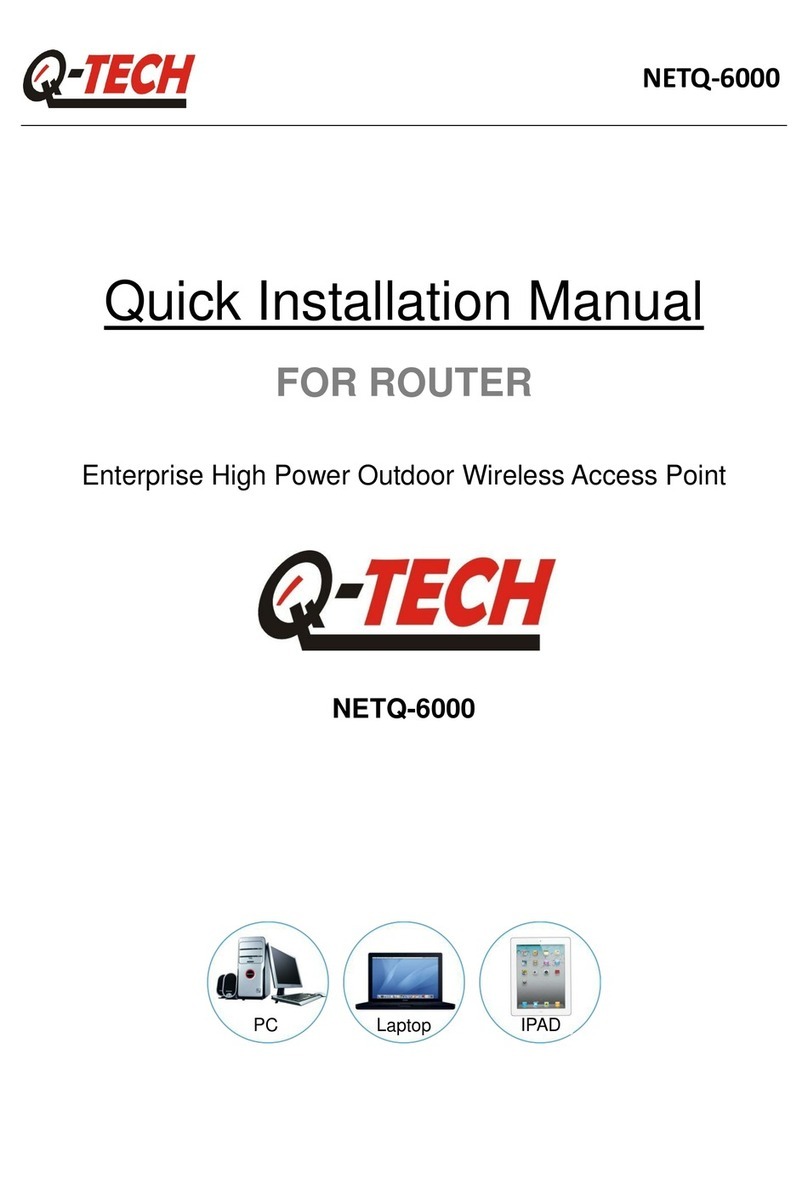
WP2P Digital– User Guide © 2020 QTech Data Systems Ltd 7
Preparing for Installation
Line of site communications is necessary for optimum operation of the WP2P Digital & Analogue System. When
planning the installation consider the following and contact QTech for advice if necessary:
a) Consider using high gain antennas supplied by QTech for extended communications range and if
communication is unreliable due to weak signal strength.
b) Consider undertaking a field radio survey to ascertain antenna requirements and identify potential
radio channel interference by neighbouring transmitters.
c) If the device is to be mounted outdoors please use an environmentally protected enclosure.
d) Antenna elevation is important to obtain best performance. Ensure antennas are mounted in free
space, unobstructed by solid objects.
e) Consider the use of a QTech WP2P Repeater if the terrain does not permit clear line of sight.
f) Ensure the device is operating the latest firmware especially if the device has been in storage for some
time. If in doubt, contact QTech for advice.
g) Ensure that the power supply meets the correct specifications detailed herein.
Installation Notes
To comply with the New Zealand and Australian wiring regulations the WP2P cannot be connected to any
external Voltages exceeding 32 Volts AC or DC. To connect to or control higher Voltage equipment please consult
a Registered Electrician.
Mounting
For indoor mounting, the device should be mounted onto a flat surface using the Qty 4x M4 fixing holes at
~102mm x 50mm centres. Where the device is to be operated outside or in other adverse site conditions, then,
the device should be housed in an appropriate plastic enclosure.
For outdoor mounting, use the RSS01 solar charging environmental enclosure and follow the installation guide
for those products. Alternatively use a minimum of IP65 rated enclosure to suit the device and any additional
equipment to be housed, ensuring that all cables are glanded.
If the WP2P is to be enclosed in a metal cabinet, then an optional external antenna will be needed. Please
contact your equipment supplier for alternative antenna details and advice.
Avoid mounting in locations that may be subject to shock or vibration or temperature extremes.
Antenna
The device is a low power device that is designed specifically for operation in New Zealand and Australia. Each
unit is supplied with a stub antenna that will provide an operating range of 50 to 350 meters, dependent upon
terrain and obstacles such as trees and buildings. All radio systems work most reliably when the path between
the radios is clear “line of sight”. This needs to be considered when planning longer range systems.
Optional higher gain, long range antennas are available. Please contact QTech for details and advice.
For best performance mount the antenna up high and away from large objects.
Warning – Do not operate the device without an antenna attached. Do not substitute
antennas; use only those antennas recommended by your equipment supplier. Failing to
comply with these requirements can damage the device.
Never operate the devices in violation of RSM conditions. AS/NZS 4268:2008 specifies a
maximum EIRP of 1 watt.




























